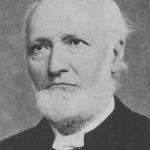During a recent presentation at National Association for Relationship and Marriage Education Summit, Dr. Scott Stanley presented the latest statistical research on marriage, shedding light on the changing dynamics of divorce in younger generations.

While we all know the hard to forget fact that 50% of all marriages end in divorce — and while those numbers justifiably cause concern among couples — it is also true that young couples are increasingly bucking that trend. Indeed, half of all marriages between baby boomers do end in divorce. But for those couples entering into marriage today, the divorce rate falls to 38%.
In unpacking the data, Dr. Stanley reveals a number of interesting factors that go into the decreased in divorce. First, marriage is less common among younger couples, and those who do marry often delay marriage in favor of co-habitation. Unlike their parents’ generation that often married young and put off many of the major life changes that come along with a marriage — living together, commingling finances, and starting a family, for example — today’s couples are taking a more cautious approach.
The average age for a first marriage in the current generation is 30 for men and 28 for women. Couples today are more deliberate about their choice to get married, and it’s also clear that societal expectation, and the pressures that come along with them, weigh less heavily on young people. There is a emphasis on the current generation on independence and individualism, which is reflected not only in marriage trends, but also in the culture at large. This stands in obvious contrast to the baby boomers, who grew up in a post-war era that promoted and valued a certain degree of subordination.
Increasingly, young people are finding contentment and happiness in unmarried life, and Dr. Stanley’s research makes clear that those who decide to get married do so with a deeper understanding of themselves, their expectations, and the aspects of marriage that will ultimately fulfill them individually, and as a couple.
If you want to try to prevent divorce and increase your chances of having a partnership marriage that endures the test of time here are five tips:
- Wait until you’re at least in your late 20’s to tie the knot.
- Select a partner who you have both chemistry (physical and intellectual) and compatibility with (share interests).
- Discuss expectations for your relationship with your partner on a regular basis.
- Learn good communication and repair skills to manage conflict. All couples experience conflicts but leaning to bounce back and repair hurt feelings is crucial for a couple’s long-term success.
- Practice forgiveness by giving sincere apologies when you hurt your partner and accepting them when you are feeling wounded. This will go a long way to heal from small and larger infractions when they occur. Not all hurtful actions are done on purpose, sometimes people simply make mistakes.
In the final analysis, there’s reason for optimism — divorce is on the decline, and the current generation seems acutely aware of the perils and positive part of marriage. Let’s hope the trend continues, and self-awareness continues to drive the decision-making of young couples who clearly want to avoid the hurt and heartbreak of divorce.
Follow Terry Gaspard on Twitter, Facebook, and movingpastdivorce.com. Her book Daughters of Divorce: Overcome the Legacy of Your Parents’ Breakup and Enjoy a Happy, Long-Lasting Relationship is available on her website. Feel free to ask a question here.
Terry’s forthcoming book, The Remarriage Manual: How to Make Everything Work Better the Second Time Around, was published by Sounds True in February of 2020.













